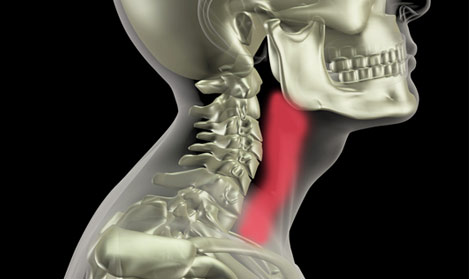Voice And Swallowing

Voice is an important aspect of our personality. We are known by our face to the visual world, but voice is a feature which also distinguishes us from other people. There are people which are entirely dependent on their voice for their professional commitments. Any problem with voice can adversely affect their day to day life.
Any change in the voice however subtle requires immediate attention as it can be due to benign conditions such as vocal nodules, cysts or polyps or point to a more sinister underlying condition such as malignancy or a neurological involvement.
Diagnosis of vocal cord pathology involves firstly visualization of the vocal cord which is done with the help of fibreoptic or rigid laryngoscopy and the the functional evaluation which is done with the help of both subjective assessment tools as well as advanced tests such as stroboscopy and using voice programmes such a MDVP ( multi -dimensional voice programmes). This helps in recognising the most subtle of disorders of the vocal cords. These conditions can be then accordingly treated by either non-surgical such as speech therapy or office -based procedures or the patient may be offered surgical options in the form of micro-laryngeal surgery.
Office Based Procedures For Vocal Cord Lesions
- Flexible And Rigid Laryngoscopy
- Videostroboscopy
- Injection Laryngoplasty For Vocal Fold Paresis/ Paralysis
- Botox Injection For Conditions Such As Spasmodic Dysphonia
- Intracordal Steroids Injections
- Biopsy From The Lesions Of The Larynx And Hypopharynx
Laryngeal Surgery
- Vocal Cord Polyps, Cysts, Nodules
- Laryngeal Papillomas
- Vocal Fold Medialization Procedures
- Glottic Webs, Subglottic Stenosis
- Leukoplakia And Carcinoma In Situ, Cordectomy
- Bilateral Vocal Fold Paralysis
Swallowing Disorders
Swallowing our food is a process which none of us recognize the importance until there is a disorder which affects the process. This essential feature of human life is so important that any deviation from the normal can cause a lot of problems in our daily life. The problems in swallowing can be due to some obstruction in the alimentary tract starting from the tongue up to the stomach, or it could be due the disturbances or disease processes involving the neural control of swallowing.
The obstruction could be due to a number of reasons ranging from foreign bodies in the tract to cyst or benign tumours in the alimentary tract or it could be due to anemia commonly seen in females and known as the Plummer’s Vinson Syndrome. Presence of diverticulae in the alimentary tract can also cause problems in swallowing or regurtitation of the swallowed foods. Additionally conditions such as webs or achalasia cardia, eosinophilic esophagitis can also result in dysphagia or difficulty in swallowing. But this symptom of dysphagia or odynophagia i.e. painful swallowing could also be an indicator of more serious condition such as malignant tumours of the esophagus which need an early diagnosis for apt management.
The swallowing being a complicated neurally integrated process, any disturbance in the neural control will thus manifest as dysphagia. There is a need to understand the exact cause of the dysphagia and accordingly address the same.
The evaluation of the upper GI tract initially was done with help of upper GI endoscopy which requires preparation and sedation needs to administered to the patient. But with availability of trans nasal endoscopy this procedure can be easily carried out as an office based procedure without the need for preparation of sedation to the patient. This manages to give as an adequate insight into the anatomical as well the functional aspects of swallowing thus providing for the diagnosis of the dysphagia.
Additionally this can be used for therapeutic procedures such as taking biopsies, removal of foreign bodies, balloon dilatation of webs and stenosis, botox injections for cricopharyngeal spasms.

